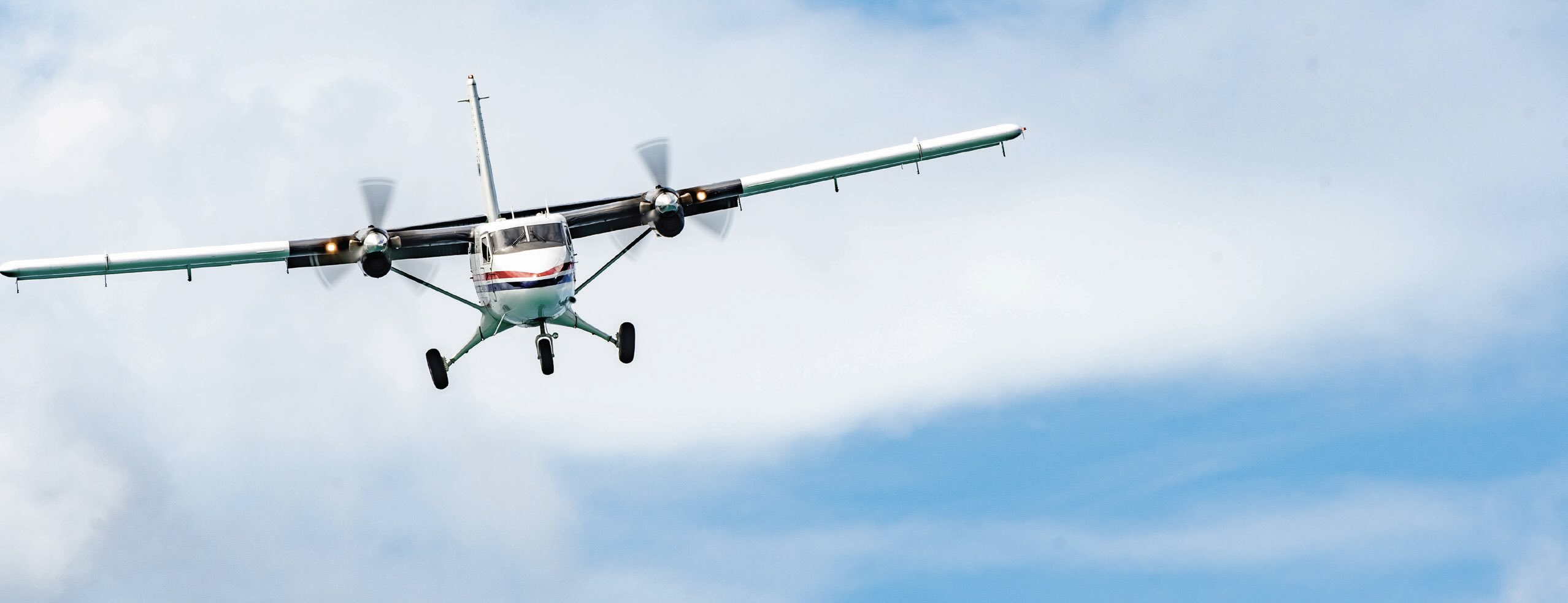Fatal consequence of friction and wear
By R. David Whitby, Contributing Editor | TLT Worldwide March 2025
Here’s one tribological example that did not end well.

In almost all instances, the consequences of friction and wear are foreseeable costs, unplanned expenses, inconvenient interruptions to operations or loss of products. Unfortunately, on a few occasions, the consequences can prove deadly.
On Aug. 9, 2007, an Air Moorea de Havilland Canada DHC-6-300 Twin Otter took off from Moorea Airport on the French Polynesian island of Moorea to make the regular seven-minute flight to Fa’a’ā International Airport on the island of Tahiti. Shortly after takeoff, the plane plunged into the Pacific Ocean, killing all 20 people on board. Air Moorea operates this regular scheduled service, one of the shortest in the world, 40 times a day.
The plane was 28 years old at the time of the accident and had flown 55,044 cycles in about 30,834 hours. Although French law did not require Twin Otters to be fitted with flight recorders, Air Moorea had chosen to install a cockpit voice recorder (CVR) on this aircraft. The plane did not have a flight data recorder (FDR). Michel Santeurenne, a French Polynesian, was the only pilot flying the plane, as Air Moorea flights generally required only a single pilot.
The accident was investigated by the French Bureau of Enquiry and Analysis for Civil Aviation Safety (BEA), because the islands are French territory. Some pieces of the aircraft were found floating on the sea, but most of the wreckage was on the seabed, 600 to 700 meters (1,969 to 2,297 feet) down. Recovery operations were very difficult, starting Aug. 26 and ending on Sept. 3. The plane had split into eight major pieces. The tail section, including the CVR, was recovered on Aug. 30. The tail section control surfaces and the elevator control systems, the engines and the cockpit were recovered on the next day.
Analysis of the CVR and metallurgical testing of the parts indicated that the crash was caused by a loss of aircraft pitch control following the failure, at a low height, of the elevator pitch-up control cable at the time the aircraft flaps were retracted.
Because the plane was being flown in a salty marine environment, it had been fitted with more corrosion resistant stainless steel control cables, rather than the usual carbon steel cables. However, these cables were prone to greater abrasive wear from the cable guides, and no modifications were made to the maintenance schedule to account for this higher rate of wear, nor the higher number of cycles experienced by the aircraft on the high-frequency short flights.
The excessive wear and failure of the elevator cable may also have been made worse because Air Moorea’s Twin Otters were parked overnight at Fa’a’ā International Airport with the elevator control wheel locked in the pitch-down position. When larger passenger jets, such as an Airbus A340, were pushed back from the gate and turned toward the taxiway, they were brought close to where the Twin Otters were parked and the blast from the jet’s engines caused the Twin Otter’s elevators to flutter, causing stress on the cable where it passed through the guides.
After climbing to a safe altitude, the pilot retracted the aircraft’s flaps, as is the normal procedure, and then reduced engine power as the aircraft approached its cruising altitude. This resulted in the aircraft losing some of the extra takeoff lift, causing the nose to tilt downwards slightly. The pilot counteracted this by pulling back on the control column to bring the nose back up, but the force of this caused the damaged elevator pitch-up cable to fray further and lengthen, which allowed the elevators to droop downwards, resulting in its nose slowly pitching down toward the sea. Almost immediately the cable snapped completely, sending the aircraft into a catastrophic dive. The pilot expressed audible surprise followed by six ground proximity warnings sounding, together with the engine speed increasing higher than during the take off and climb.
Pilots can be trained to recover from loss-of-pitch-control by using aircraft trim, but in this case the plane was not high enough for the pilot to do this. Only 11 seconds elapsed between the pilot’s exclamation and the plane hitting the water.
David Whitby is chief executive of Pathmaster Marketing Ltd. in Surrey, England. You can reach him at pathmaster.marketing@yahoo.co.uk.